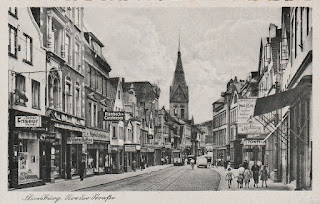The 1913 sent postcard shows "L'Eden-Cinema" on the Promenade de la Chevalerie in Lons-Le-Saunier (Jura).
Le Progrès writes about this place: Cars are now invading “Promenade de la Chevaliere”. It was once a pleasant place for walks, as its name suggests, with large trees. There was a charming bandstand there, built in 1878 and disappeared less than a century later, in 1974, without us really knowing under what circumstances. The band of the 44th infantry regiment garrisoned in Lons or the Municipal Harmony gave concerts there on Sunday afternoons and Thursday evenings in the summer.Next door was the Chalet café where the Lédoniens stopped for refreshments. In 1908, it covered and closed his upstairs terrace. Particularly for thermal spa guests, the café sets up a stage and gives shows, taking the name Kursaal. In 1912, he succumbed to the cinema craze and became “Eden-Cinéma”. This was the first cinema in Lons-le-Saunier. Later, it took the name “The Regent”, until 2014 when it fell under the blows of excavators and demolition workers to transform into a modern multi-room: “The Mégarama”.
The Mégarama multiplex with 7 rooms and 990 seats was designed by the Carril architectural firm.









